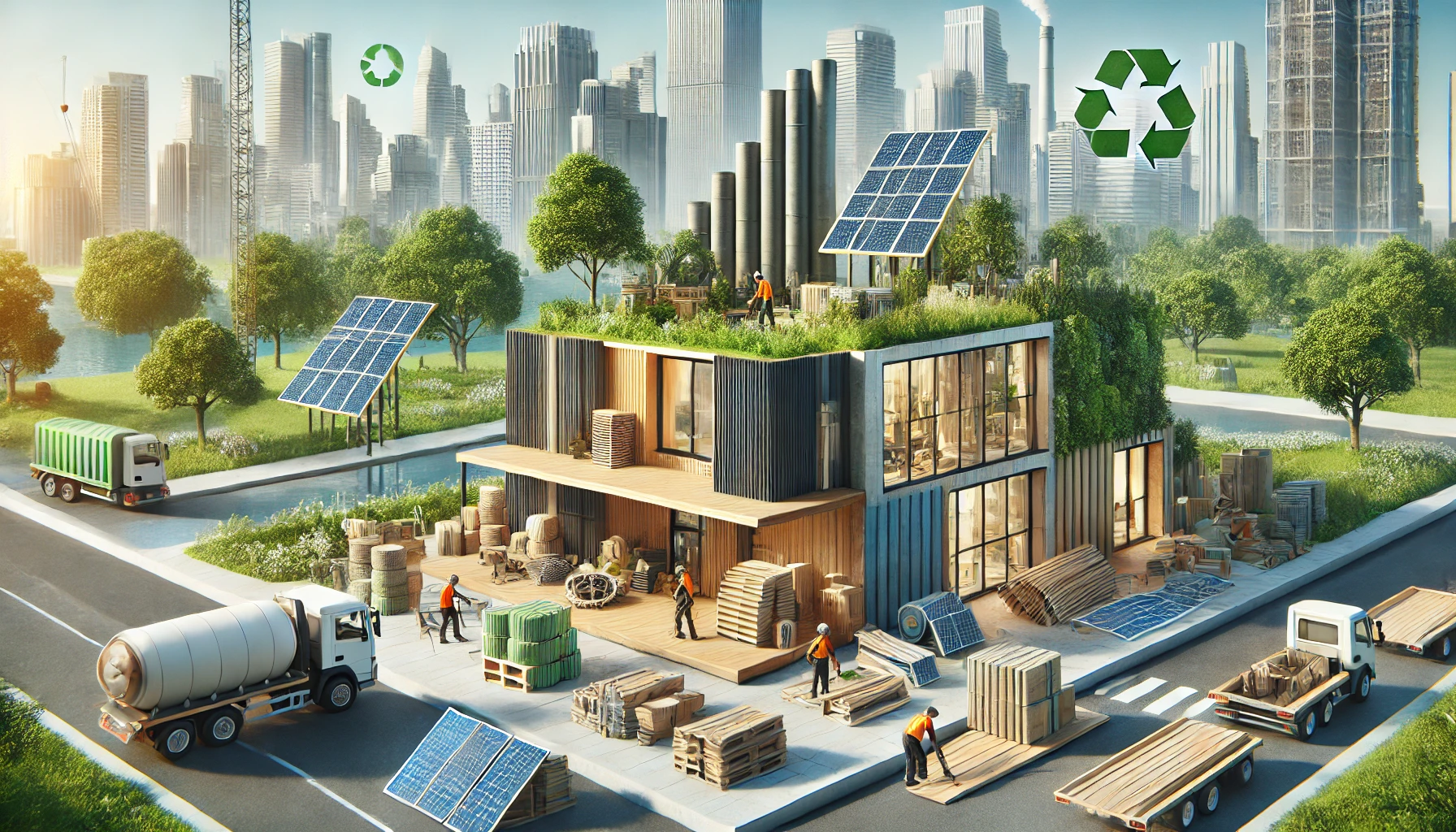
Recycled Materials in Construction: A Sustainable Revolution
Introduction: Why Construction Needs a Green Makeover
Ever wondered what happens to all the demolished buildings, old tires, and discarded plastic? They often end up in landfills, contributing to environmental chaos. But what if we told you that these waste materials could be the future of construction? Welcome to the era of sustainable building, where recycled materials are transforming the industry.
The Environmental Impact of Traditional Construction
1. Construction Waste and Its Devastating Effects
The construction industry is a massive contributor to global waste, producing millions of tons of debris each year. From excess concrete to broken bricks, much of this waste is non-biodegradable, creating a lasting impact on our environment.
2. The Carbon Footprint of Conventional Materials
Did you know that producing cement alone is responsible for about 8% of global CO₂ emissions? The extraction, processing, and transportation of raw materials like steel and glass consume enormous amounts of energy, worsening climate change.
Recycled Materials: The Game-Changers in Sustainable Construction
3. Recycled Concrete: Turning Old Structures into New Foundations
Instead of letting demolished buildings go to waste, crushed concrete can be repurposed as aggregate in new constructions. This not only reduces landfill waste but also minimizes the need for fresh raw materials.
4. Plastic Waste: From Pollution to Construction Innovation
With plastic waste choking our oceans, companies are finding creative ways to repurpose plastic into eco-friendly construction materials like durable bricks, insulation panels, and even road surfaces.
5. Recycled Wood: Giving Timber a Second Life
Reclaimed wood from old buildings and furniture can be transformed into flooring, furniture, and structural elements, preserving forests and reducing carbon emissions.
6. Scrap Metal: The Power of Reused Steel and Aluminum
Recycling metals like steel and aluminum uses significantly less energy than producing them from raw ores, making it a cost-effective and environmentally friendly option.
Energy-Efficient Innovations: Reducing Carbon Footprints
7. Solar Power for Homes: A Bright Future
Integrating solar panels into buildings not only harnesses renewable energy but also cuts down electricity bills. The benefits of using solar energy at home include long-term savings and reduced reliance on fossil fuels.
8. Energy-Efficient Appliances: Smart Living for a Greener Tomorrow
Switching to energy-efficient appliances like smart thermostats and LED lighting significantly reduces energy consumption, making homes more sustainable.
Green Technology Reviews: Innovations Shaping the Future
9. Best Electric Vehicles 2025: The Road to a Cleaner Planet
Transportation and construction go hand in hand. Choosing the best electric cars for an eco-friendly lifestyle ensures that sustainability extends beyond just buildings.
10. Top Green Technologies Reshaping Construction
From 3D-printed houses made of recycled materials to self-healing concrete, innovation is leading the charge in sustainable construction.
Top Green Building Techniques: Redefining Sustainable Living
11. Passive House Design: Maximizing Energy Efficiency
Utilizing smart insulation, natural ventilation, and energy-efficient windows helps reduce heating and cooling needs.
12. How to Make Your Home More Energy-Efficient
Simple upgrades like sealing air leaks, using smart home technology, and optimizing insulation can drastically cut energy use.
13. How to Start Living Sustainably Through Construction Choices
Choosing locally sourced, recycled, and energy-efficient materials is a major step towards a greener future.
The Future of Recycled Materials in Construction
14. Government Initiatives and Climate Change Solutions
Many countries are enforcing climate change solutions that encourage using recycled materials in new projects, pushing for a zero-waste construction industry.
15. A Circular Economy: The Ultimate Sustainability Model
Shifting to a circular economy ensures that materials are continuously repurposed, reducing waste and promoting a sustainable lifestyle.
Conclusion: Building a Greener Tomorrow
Recycled materials in construction are no longer just an experiment—they are the future. By choosing sustainable alternatives, we reduce waste, conserve resources, and take a crucial step toward combating climate change. Whether it's using recycled concrete, installing solar panels, or driving an electric vehicle, every choice matters.
FAQs
1. What are the most common recycled materials used in construction?
Concrete, plastic, wood, metal, and even glass are frequently repurposed into sustainable building materials.
2. How does using recycled materials help the environment?
It reduces landfill waste, conserves natural resources, and lowers carbon emissions associated with raw material production.
3. Are recycled construction materials as durable as traditional ones?
Yes! Many recycled materials undergo rigorous processing and testing to ensure they meet or exceed traditional standards.
4. How can I incorporate recycled materials into my home?
Opt for reclaimed wood, recycled steel, and energy-efficient upgrades like solar panels and smart insulation.
5. What are the biggest challenges in adopting recycled materials for construction?
Initial costs, lack of awareness, and limited supply chains can be obstacles, but increasing demand is driving change.